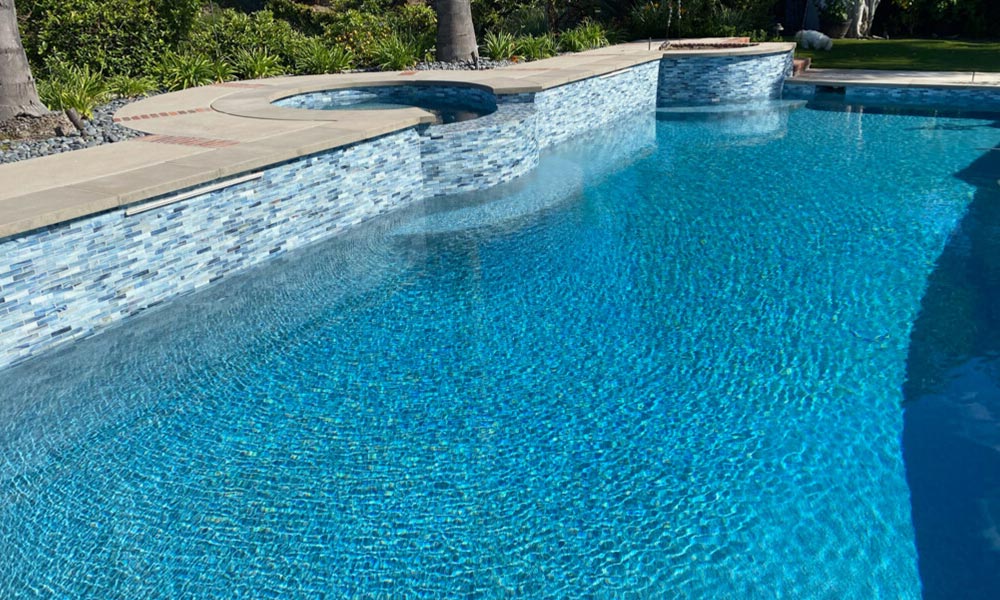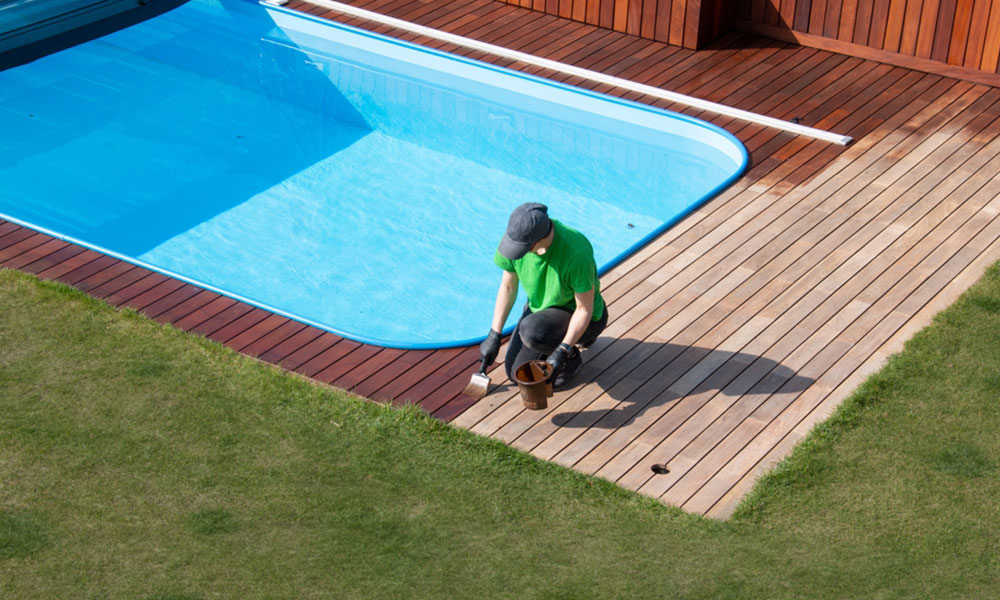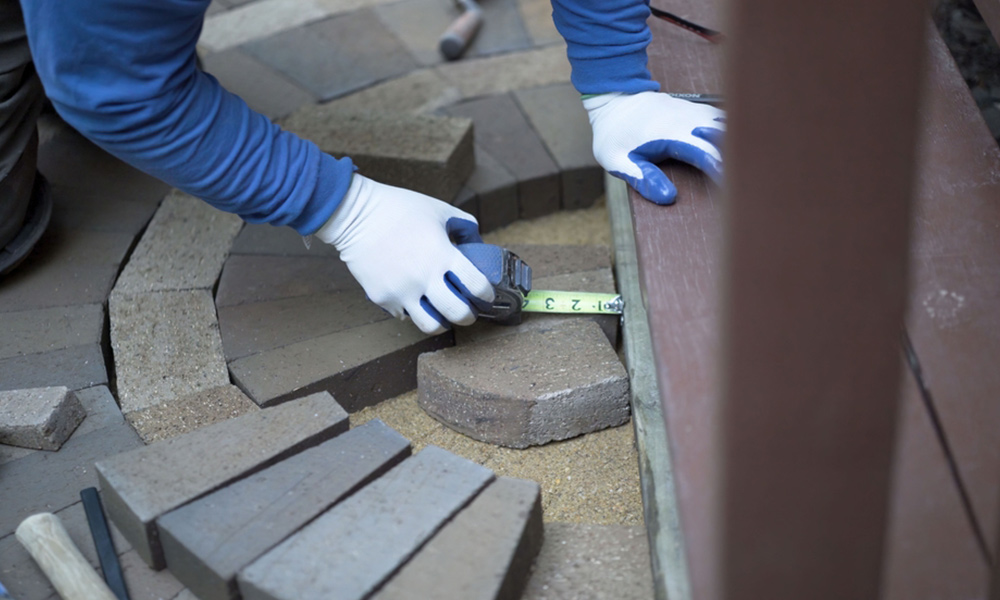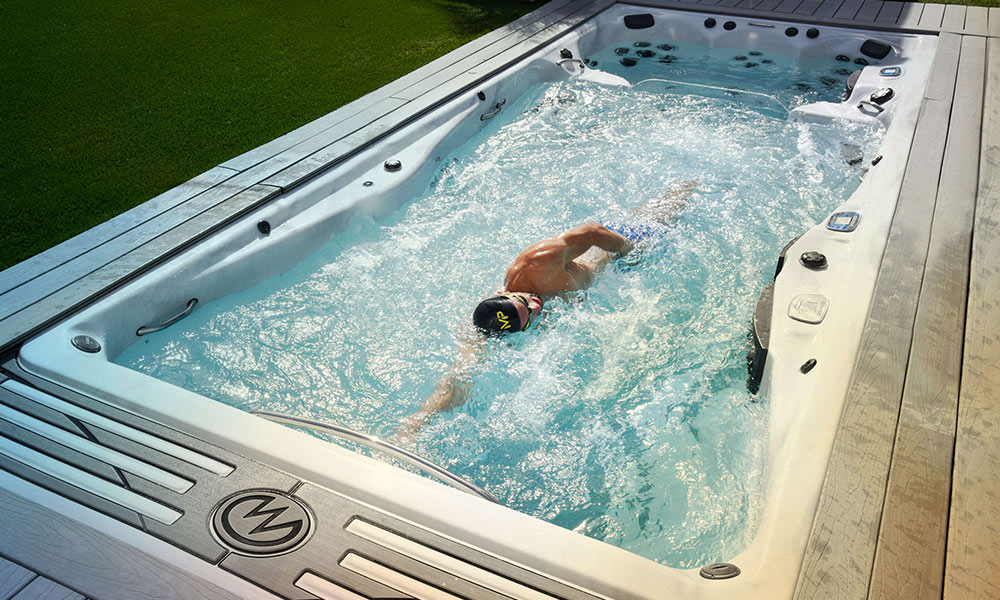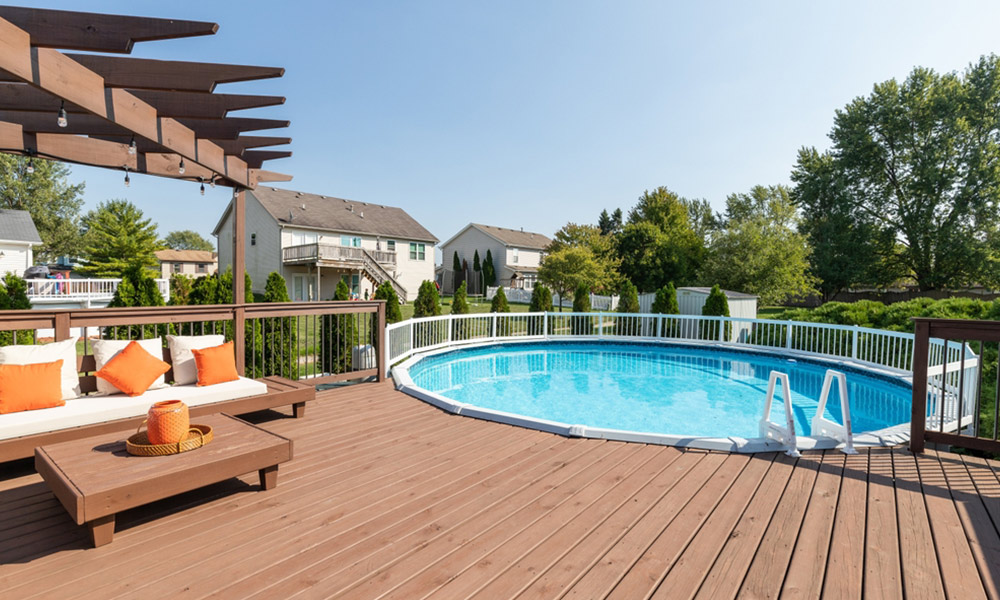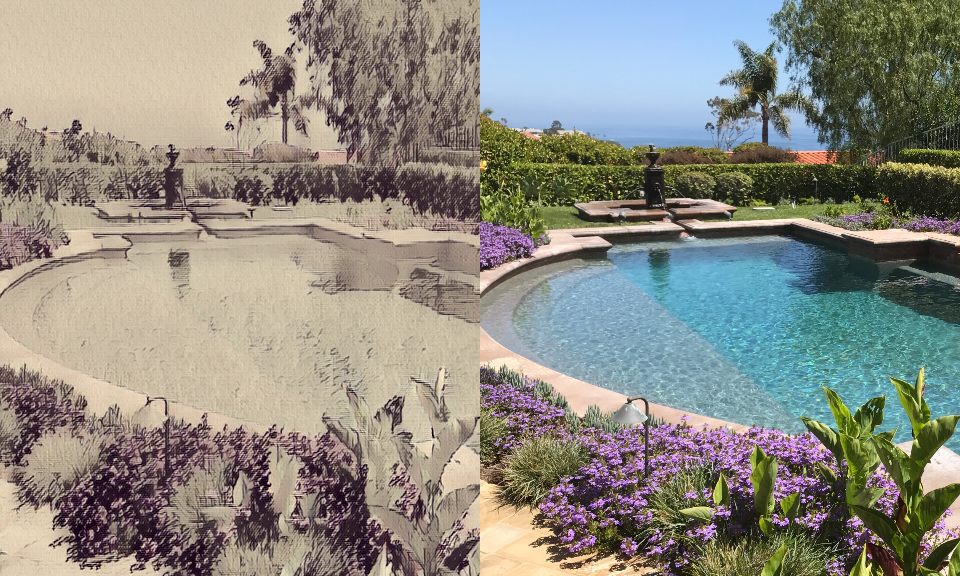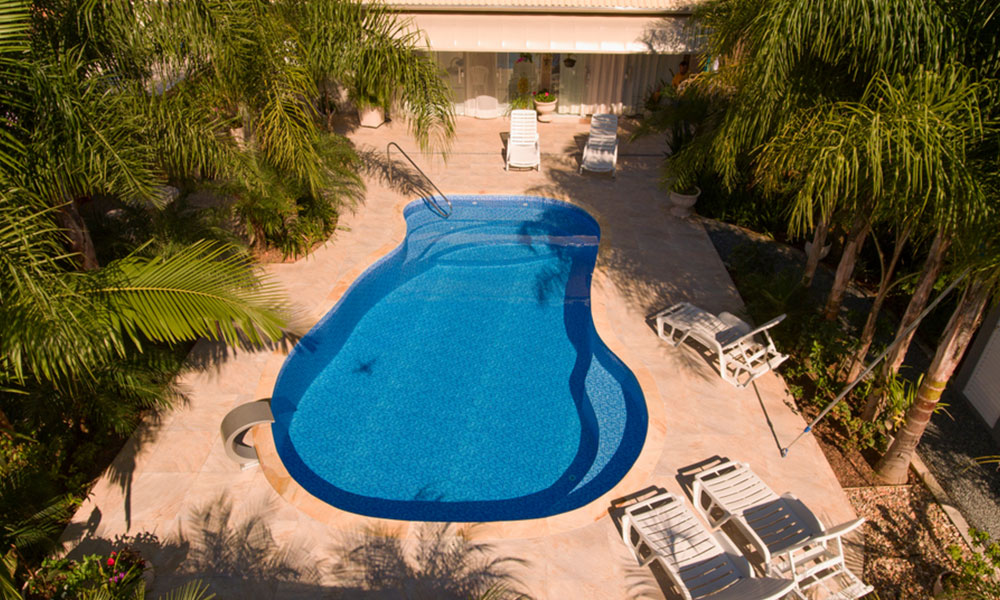Table of Contents
ToggleWhat are the different types of surfaces for a pool?
The entirety of a pool that you’d see if it wasn’t filled with water constitutes a pool surface. This primarily refers to the walls and floors of a pool. You might imagine that there’s a huge amount of variety to these surfaces.
But while there’s a nearly infinite number of options for a surface’s look, there are only three main types of pool finishes.
And it’s your choice of type that will determine both options for appearance and possibly different associated costs for elements like maintenance.
Gunite/Concrete
You might not be overly familiar with gunite. But you probably know one of its major components – concrete. Gunite is a mixture of concrete with water and sand. This unique mixture isn’t poured out like concrete. It’s instead sprayed out with a special high-pressure system. This is really the main difference between Gunite and concrete.
If it’s sprayed it’s gunite and if it’s poured it’s considered concrete even if it has sand and water mixed in.
When you keep that similarity in mind you’ll know what to expect this surface to look like. But unfortunately, it also inherits some of the longer pool installation timeframes associated with concrete. This makes it the slowest of the three main surface types.
Fiberglass
Fiberglass is one of the quickest to install options. This is thanks to the fact that it’s not actually constructed within the confines of your pool area.
Fiberglass pools are instead constructed offsite using a mold. They’re then lowered into the ground at your desired location.
The fiberglass is, just as the name suggests, a surface made from fiberglass and plaster. They generally are available in various shades of blue with different mixes added to them to get different effects when water and light hits it.
Vinyl
Like fiberglass, the name of this surface type tells you exactly what you’re getting. A vinyl surface is made of layers of vinyl that are laid out over a frame in your pool area.
This is generally the most cost-effective option. But at the same time, it’s also the least durable.
A vinyl surface will typically only last about five to ten years. And damage to it is fairly common, especially tears.
Pool Finish Types
If you’re wondering how three types of surfaces can lend themselves to the infinite variety of pool designs then you’ll find a large part of that answer in pool finishes. A pool finish acts as a coat or cover sitting on top of the raw material. And you have a wide variety of options for finishes, each lending itself to different aesthetics. For example, dark pools have become one of the more popular design trends. A dark, or black bottom pool leveragers these finishes to simulate the look and feel of bottomless depths. And this general principle holds true for a wide variety of other choices. Finishes can essentially be used as the canvas by which you design the pool of your dreams.
Plaster:
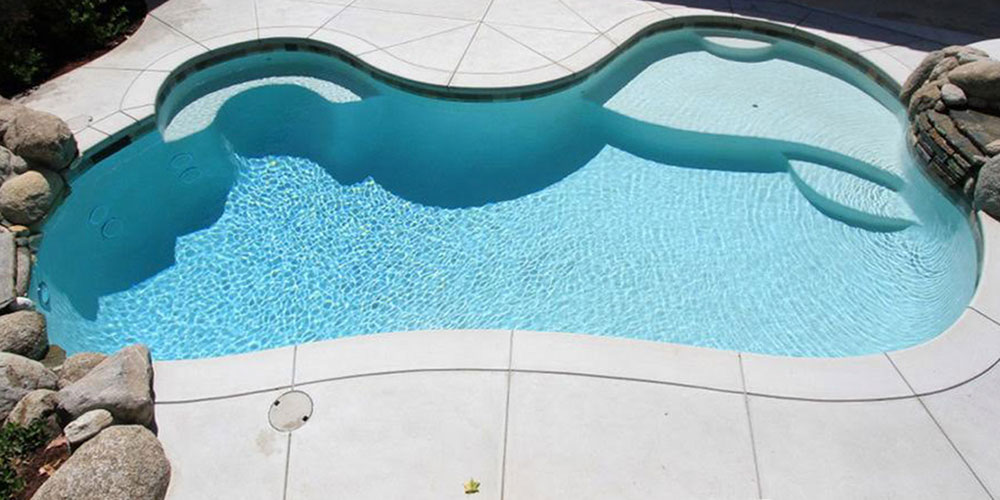
A plaster finish is typically made with a white design aesthetic. It’s one of the more classic looks and makes for an appearance that’s refreshingly nostalgic to a lot of people. Plaster might not seem overly glamorous at first glance. But this emotional element adds allure. And the fact that it’s among the most inexpensive options doesn’t hurt either. However, there are also some interesting variants of plaster to consider.
Aggregate:
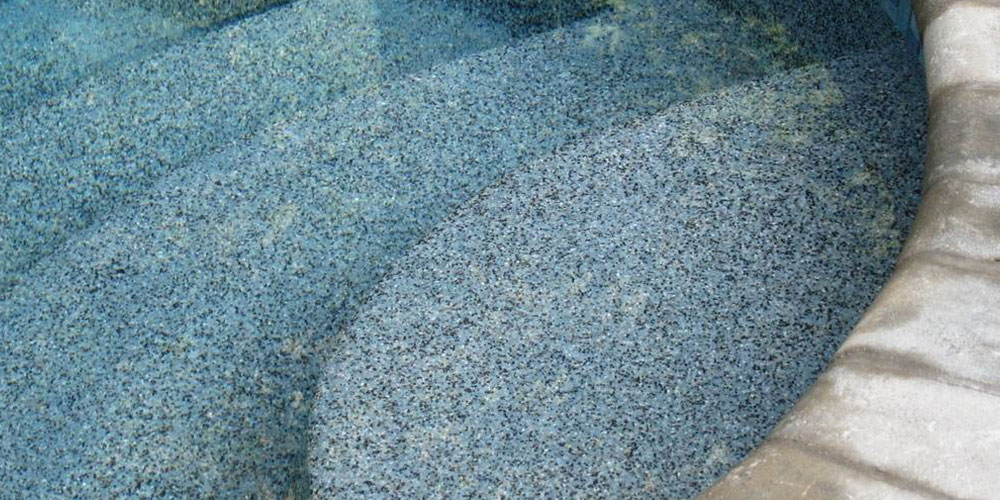
Aggregate pool finish combines plaster with small pieces of hard, colored, material. Colored quartz, glass beads, and river stones are the most common choices for embedded materials. They lend both some extra flourish and durability to standard plaster.
Polished Aggregates
If you crush the aggregate into plaster then the result is known as polished aggregate. This technique is typically used with colored stones like quartz or marble. The result is then applied by hand in order to maximize the beautiful sheen.
Exposed Aggregates
Exposed aggregate finishes expose the material to both eyes and air. But it gains a special appeal because of its advanced craftsmanship. Pebbles or beads are applied by hand, as is the case for polished aggregate. But it’s then power washed with muriatic acid and water. This removes the top layer and exposes the beauty laying beneath the surface.
Tile:
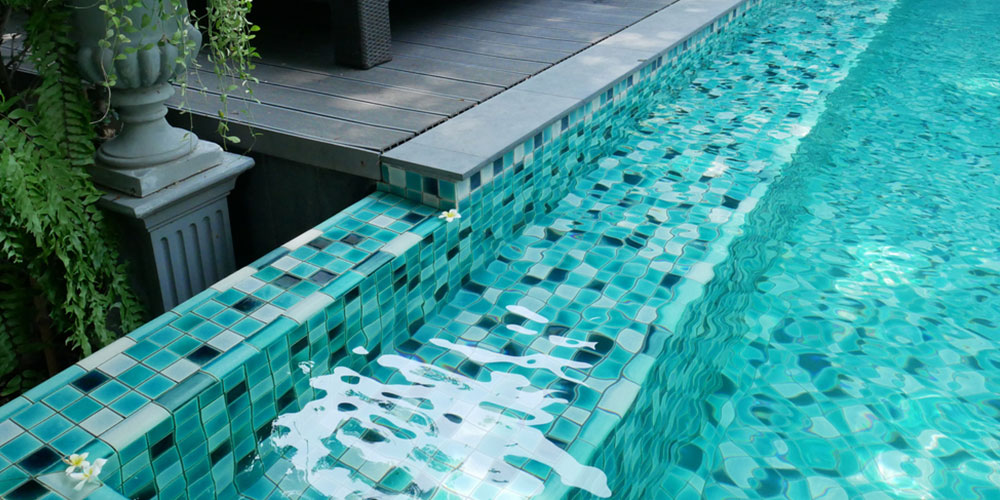
Tile has an inarguable elegance. But at the same time, it’s also the most expensive finishing option. But that higher cost does bring multiple different options which each have their own unique benefits. However, going with tiles tends to become a continual slide into ever-increasing prices. If you do choose tiles for your pool finish there is then the decision on which types of tiles you want.
Tiles are generally more expensive than other options due to the labor involved in installing them as well as the tiles themselves. It is easy to see how the material and preparation of tiles costs more than plaster for example. But there are options out there, like Viking Capital, which can ensure you get the financing you need to get the pool of your dreams.
Ceramic and Porcelain Tile
Porcelain and ceramic are among the least expensive options if you’d like to go with a tile finish. But don’t let the lower price fool you. It’s amenable to some truly dazzling designs and there are a variety of colors to choose from. Many people even go with hand painting for their ceramic tiles in order to add an extra element of classic style.
Stone Tile
Stone has a beauty that lends itself to most designs. For example, it’s a popular choice for modern and standard pool styles. But stone tiles are perhaps best suited to natural pool designs. That inherent appeal of marble, granite, limestone, and other decorative stone fits perfectly into any design focused on natural beauty.
Glass Tile
Glass tile may have been around for a while now. But it’s only recently started to really get the credit it deserves. Glass tile has some inherent benefits like the fact that it stands up to potential stains or danger of erosion. But it’s simply the sheen and shimmer of glass tiles that tend to attract people to the idea. Pool water already has a way of refracting light to create dazzling displays. But the reflective quality of glass tile can take that effect to the next level.

Making a Final Decision on the Perfect Pool Surface Type
Your choice of pool surface can make a huge difference in a wide variety of areas. But the number of choices is a testament to the fact that there’s no objective right answer. Instead, it’s one of the many options pool owners must make a decision on after weighing up all the pros and cons. Talk to your pool builder and get their on what would be best for your situation.

